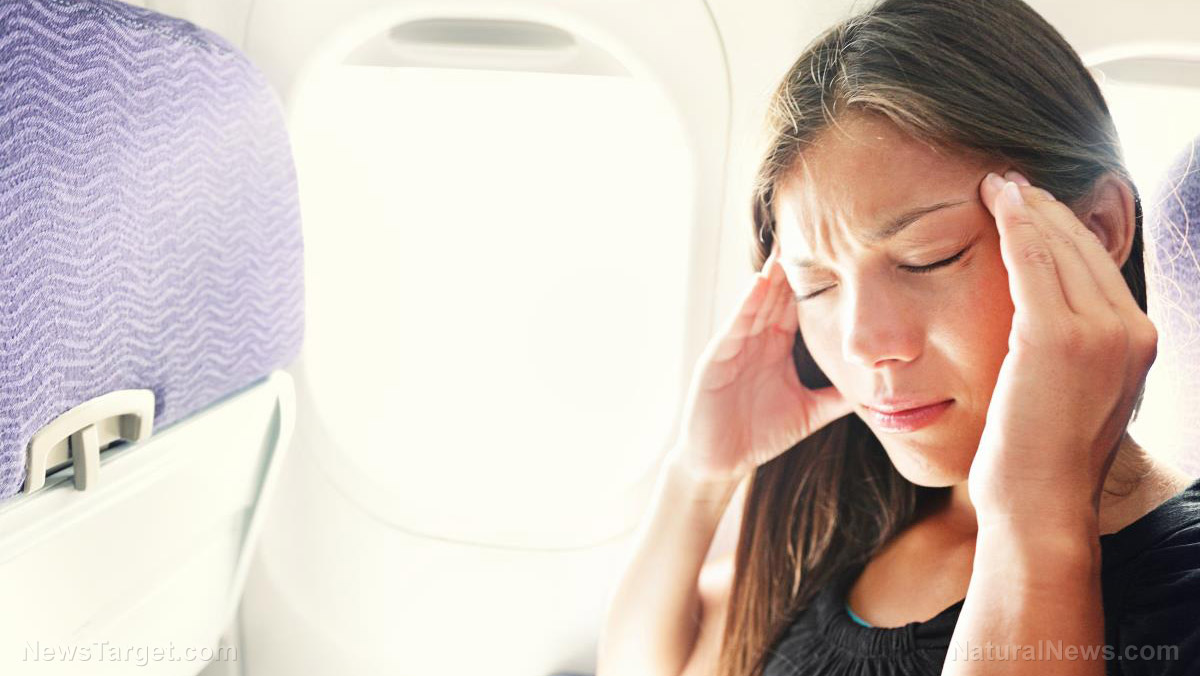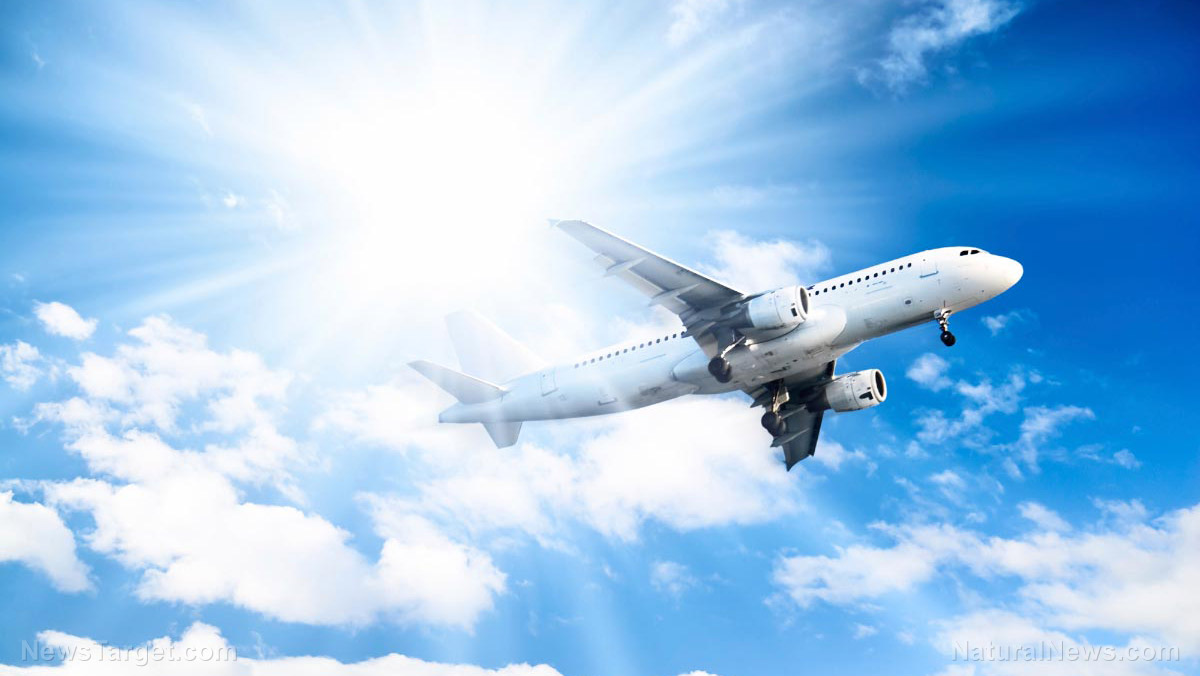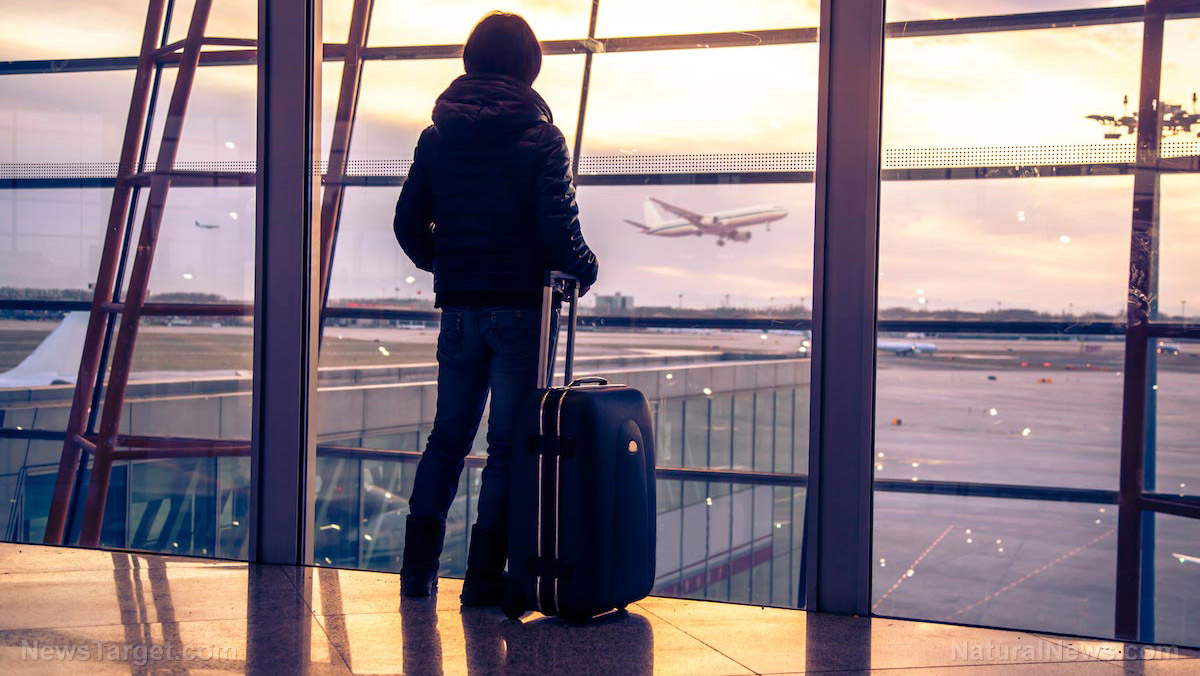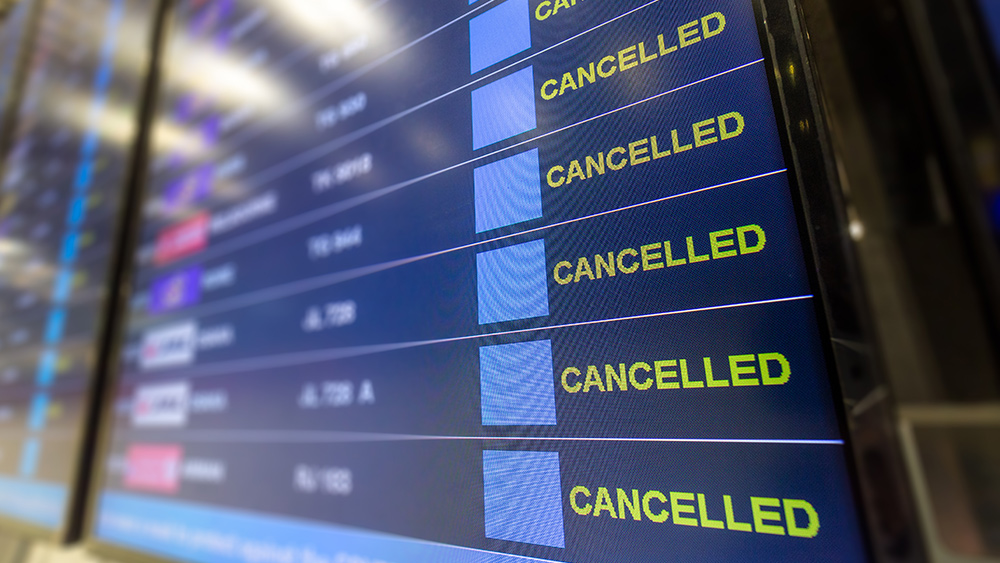Tips for avoiding the flu when you’re on a plane
02/02/2018 // Frances Bloomfield // Views
Tags: air travel, Airplanes, avoiding the flu, contagious disease, dangerous bacteria, Flu, Flu Season, goodhealth, goodmedicine, health tips, influenza, life advice, Travel Tips

- Be wary of the bathroom: According to the HuffingtonPost.com, about 50 people will go to the bathroom on an average flight. Exercise extreme caution if you're one of those 50 people. The plastic surfaces may cut the lives of bacteria short, but they also make it easier to transmit bacteria to your hands. Prevent this from happening by using a towel or your sleeves to open the latch then nudging the door inwards with your elbow. Wipe the toilet seat cover before sitting down, and don't forget to close the lid when you flush. Always wash your hands afterwards. If you can avoid going to the bathroom altogether, that would be even better. (Related: FLYING IN FILTH: 9 airplane surfaces that harbor dangerous bacteria.)
- Stay away from the meal tray tables: From serving as a makeshift changing station to being a convenient place to wipe snot-covered hands on, meal tray tables are often used for anything but eating. It doesn't help that some flight attendants have admitted to washing the meal tray tables only once per day. This is why you have to wipe down your meal tray table with some antibacterial wipes before eating from it – but never off it. Some travelers have recommended not using them at all, so do that if you can.
- Choose the window seat: Not only do window seats offer the better view, they also help keep you from getting sick. As per BusinessInsider.com, sitting near the aisle raises your chances of being exposed to germs. This is because you're closer to people coming to and from the bathroom, and folks who have a habit of latching onto aisle seat backs when they walk through the plane.
- Use the air vents: Forget the rumors that turning on the air vents will recycle germs. Don't be afraid to turn on the vent above your head; high-efficiency particulate absorption (HEPA) filters will ensure that cabin air is free of viruses and bacteria.
- Bring a nasal spray: Cabin air may be relatively clean, but it'll dry out your nose too. A nasal spray will moisturize your nose and enhance the flow of all those tiny, germ-blocking nose hairs.
- Hydrate often: Because cabin air is dry, it's important that you stay hydrated. Ask for bottled water instead of tap water though, since the bacterial levels of airplane tap water is nothing short of appalling. On that note, don't ask for coffee or tea either, since the temperatures used to brew water usually isn't hot enough to kill bacteria.
- Avoid the blankets and pillows: Unless you're on the first flight, you're not the only person to use your seat's blanket and pillow. Need another reason to keep these where they are? An investigation revealed that airlines can take as long as 30 days before washing the blankets and pillows. At the very least, they'll do this every five days. Play it safe by bringing your own blanket and pillow.
- Don't touch your face: Germs can “get in” through your eyes, nose, and mouth, so make it a point to decontaminate your meat hooks every time you touch something on the plane.
- Ask to change seats if your seatmate is sick: Provided that there are some open seats on the plane, you can ask a flight attendant if you can sit elsewhere. If the flight is full, be sure to hold your breath for several seconds when your seatmate coughs or sneezes.
Remember the old saying: An ounce of prevention is worth a pound of cure. And with flu season at an all-time high, you'll definitely want to choose prevention over the so-called cure.
Go to Prevention.news to read up on making it through the flu season in one piece.
Sources include:
Related Topics
air travel Airplanes avoiding the flu contagious disease dangerous bacteria Flu Flu Season goodhealth goodmedicine health tips influenza life advice Travel TipsLatest News
Related News
10/17/2023 / By Zoey Sky
01/13/2023 / By Ethan Huff
11/18/2022 / By Kevin Hughes
10/19/2022 / By Arsenio Toledo
07/12/2022 / By Ethan Huff
Take Action:
Support Natural News by linking to this article from your website.
Permalink to this article:
Copy
Embed article link:
Copy
Reprinting this article:
Non-commercial use is permitted with credit to NaturalNews.com (including a clickable link).
Please contact us for more information.
Please contact us for more information.























